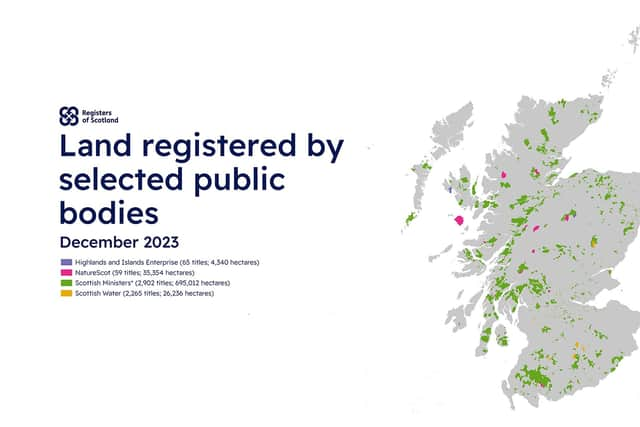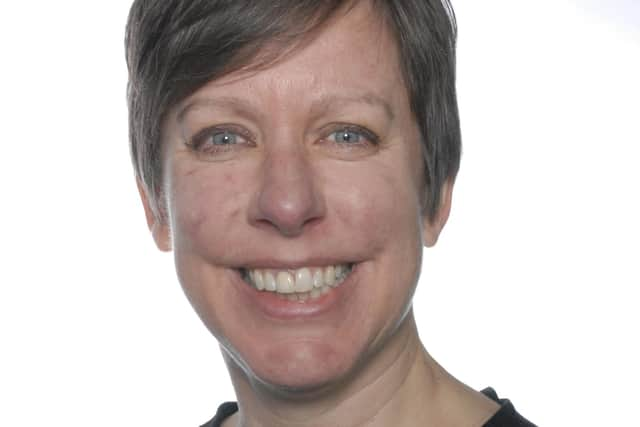Land ownership Scotland: Why Registers of Scotland can help reveal who owns nation's land
The data we manage at Registers of Scotland (RoS) can play a fundamental part in revealing who owns our nation’s land. While we’re proud of the progress to make our registers more meaningful and accessible, they don’t, on their own, answer every question about land ownership.
First, let’s look at what they can do. Our award-winning ScotLIS service has been a game changer. It’s revolutionised the way everyone, from people checking house prices in their street, to property solicitors, gain insight into Scotland’s land and property.
Advertisement
Hide AdAdvertisement
Hide AdScotLIS data comes from the Land Register of Scotland – a map-based digital record of property ownership. In addition, we hold the General Register of Sasines, the oldest national public land register in the world. Those historic records are a rich source of information, but need work to turn them into a format suitable for modern needs.


In many cases, land or property must change hands before RoS can move it to the Land Register. However, lots of land and property that’s still in Sasines doesn’t change hands very often and importantly, it’s unlikely to move any time soon. Land owners can voluntarily register, but that involves solicitor and surveyor fees, so it can be a significant investment.
Instead of waiting for all that land to transact, RoS has used a range of spatial data to “unlock” the historic information in the Sasine Register. This means that we can link Sasine property search sheets to a map for the first time, making it visually more helpful and accessible.
The progress we’ve made to unlock this data has enabled RoS to map the ownership of 94.5 per cent of Scotland’s land mass. This figure is made up of Sasines data, as well as land in the Land Register and applications in progress at RoS. Adding all titles to the Land Register is still the aim. But in the meantime, the Unlocking Sasines project is delivering the benefits of a completed Land Register now.
As its name suggests, the Land Register is a record of land and property details rather than of people. ScotLIS searches by postcode, street or property title number rather than by person, company or organisation. The maps published by The Scotsman are based on data we hold as the official provider of land and property statistics in Scotland. Our public task is to provide certainty of land ownership and related land rights based on a particular location. Summarising total land ownership by an organisation or individual is not straightforward. That’s especially true for larger bodies of land that may be owned by a variety of trusts, estates, companies or parties.


This is where our new register, the Register of Persons Holding a Controlled Interest in Land (RCI) will help. Its purpose is to improve transparency about those who have a controlling interest in land, even if they are not necessarily registered as the land’s owner, this includes overseas entities and trusts.
We continue to raise awareness about our newest register and encourage everyone in scope to submit by the deadline of April 1, 2024. You can find out more on www.ros.gov.uk/rci. Alongside the Government’s other transparency measures, it’s hoped it will bring even more clarity when anyone asks the question: who owns Scotland?
- Jennifer Henderson is the Keeper of the Registers of Scotland
Comments
Want to join the conversation? Please or to comment on this article.